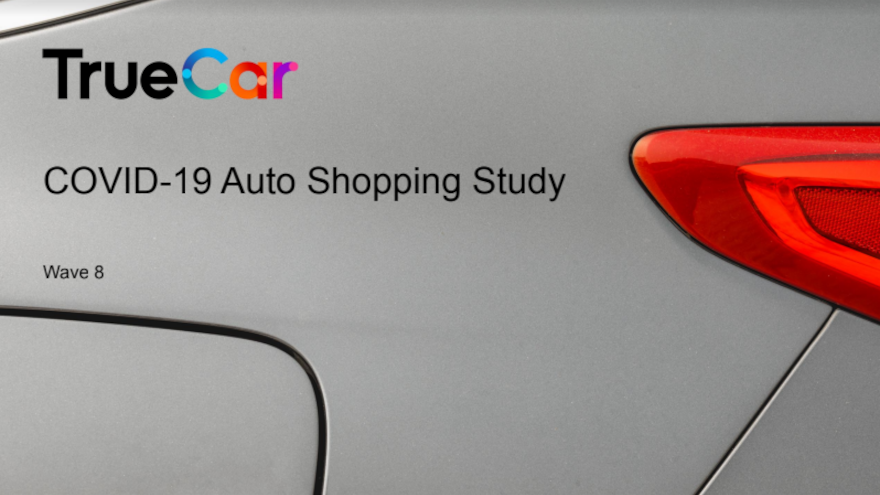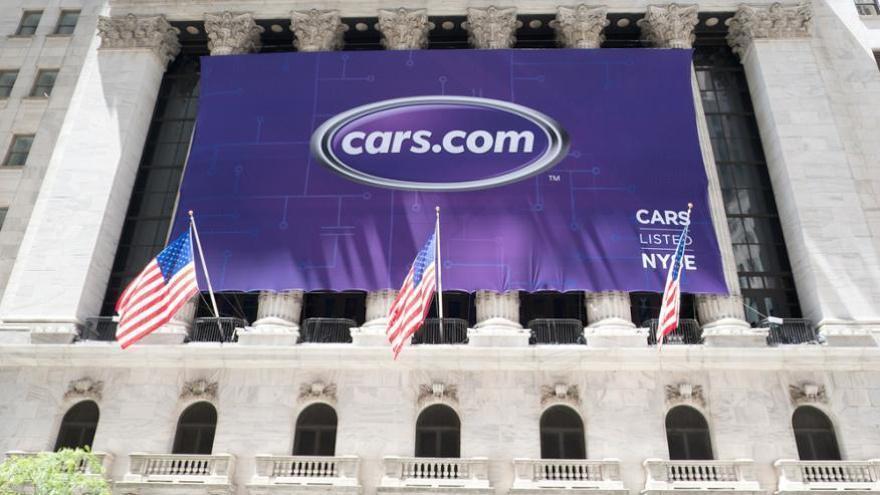Within hours of the Supreme Court making its decision on Thursday, ComplyNet president and general counsel Adam Crowell made another appearance on the Auto Remarketing Podcast to provide an update about mandates put forth by the Occupational Safety & Health Administration (OSHA) involving COVID-19 vaccinations and testing.
Crowell described what dealers have been facing since these proposed mandates first surfaced in November and arguments in federal court that ensued.
To listen to the conversation, click on the link available below, or visit the Auto Remarketing Podcast page.
Download and subscribe to the Auto Remarketing Podcast on iTunes or on Google Play.
In this special episode of the Auto Remarketing Podcast, ComplyNet president and general counsel Adam Crowell gave an update about mandates put forth by the Occupational Safety & Health Administration (OSHA) involving COVID-19 vaccinations and testing that now are being argued in federal court.
Crowell explained the court activities that happened over the weekend and what auctions, dealerships and other businesses that employ more than 100 workers are being asked to do.
To listen to the episode, click on the link available below, or visit the Auto Remarketing Podcast page.
Download and subscribe to the Auto Remarketing Podcast on iTunes or on Google Play.
With the pandemic intensifying again, prompting businesses to modify policies and strategies, 360Converge is looking to help the automotive industry.
On Tuesday, the provider of workflow automation through text and email announced it is offering its platform for dealership staff and partners free of charge. Officials from 360Converge said the complimentary service is meant as a stop gap for managers who are facing a critical need for employee communication as the pandemic continues to impact businesses and households.
Through the complimentary service, clients, prospects and industry friends will be able to upload their staff and vendor lists to the 360Converge platform free of charge and immediately begin texting these groups as needed with the dealership’s latest procedures and policies.
In addition, 360Converge said that lists for onsite vendors and partners also can be created and uploaded to efficiently let the visiting vendors know the COVID policies implemented in the store before they enter to create a safer work environment.
If the dealership is unable to log into the platform from their store, 360Converge can help to create a message and send it from a manager’s phone or computer on the go. The client can send an email or text to a specific address, and the platform will automatically send out the message, while not disclosing the phone number, and store any responses in the 360Converge inbox.
Through a news release distributed by 360Converge, Sun Chevrolet general manager Robert Curcio said, “360Converge is a partner in the truest sense of the word, so I was not surprised when they offered this texting service as a way to help ease the burden of communicating our COVID policies and practices.
“With the situation changing almost daily, I’m relieved we have a way to immediately reach out to our staff, partners, and vendors to keep them informed of our latest policies,” Curcio continued.
Automotive companies interested in taking advantage of the free texting service can upload their lists at https://360converge.com/covid and begin texting their teams immediately.
“Text is the best way to connect with a large group of team members and ensure everyone within the organization receives the same message in a timely manner, from your wash bays to your boardrooms,” 360Converge chief executive officer Todd Smith said.
“We wanted to help our clients and others in the industry get policy changes, alerts, and news out quickly during this second wave of the pandemic. It’s our way of giving back to stop the spread,” Smith went on to say.
For more information on 360Converge, visit www.360converge.com.
TrueCar released the eighth wave of its study on the pandemic’s impact on vehicle shopping and vehicle shoppers’ needs, noting that concerns about future potentially diminished income are now a top factor in deterring a vehicle purchase.
Meanwhile, the threat of catching or spreading COVID-19 while shopping as a factor discouraging a vehicle purchase is at its lowest point during TrueCar’s study series.
As the pandemic has reached its one-year milestone, many people are receiving vaccinations while warmer weather is bringing more outdoor activity, said TrueCar head of research and consumer insights Wendy McMullin.
“So, it’s no surprise that we’re seeing somewhat less concern over COVID-19 transmission while vehicle shopping,” McMullin said in a news release. “Instead, we’re seeing financial concerns emerge as stronger purchase deterrents, possibly reflecting the return of less affluent shoppers to the market.”
Consumers still want more of the car-buying process to take place outside the dealership, and TrueCar expects that trend to continue even after the pandemic, McMullin said.
The TrueCar study took place on March 12, and at that time, more than 70 million Americans had received at least one dose of a COVID-19 vaccine.
But along with reporting that good news, the survey noted that concerns about potentially diminished future income are a factor for 35% of respondents to deter a vehicle purchase, while 30% say lower income now is a concern.
The dealership not having the vehicle consumers wanted reached its peak at 35% as a factor that would deter a vehicle purchase. That is a 46% increase since July.
TrueCar lead industry analyst Nick Woolard said the industry is still seeing the downstream effect of automaker manufacturing plant closures.
“This has reduced the number of new cars on dealer lots, which means fewer model and trim options for car buyers,” Woolard said.
Woolard also said, “This helps explain why over a third of consumers indicated that not having the car they want on the dealer lot is delaying or deterring their car purchase, impacting the demand side of the market.”
The survey also noted factors that encourage dealership interaction, and the top three are configuring the deal online, performing an at-home test drive, and completing the entire purchase online.
The effect of COVID-19 on vehicle shopping is a main topic of the survey, and 17% of respondents said their interest in vehicle delivery has increased. Twenty-three percent of respondents said they would purchase a less-expensive vehicle, and 29% said their vehicle needs have increased as a result of the pandemic, which is more than any prior wave of the study.
More details on some of the study’s top findings:
— Forty-nine percent of auto shoppers are very concerned or extremely concerned about COVID exposure regarding their vehicle purchase process. That is a decline from 55% in the study’s wave 7 conducted in January.
— Shopper desire for completing the entire purchase online has decreased, but a strong desire exists for components of remote buying. For example, 39% of shoppers would be encouraged to work with a dealership that allows them to configure their deal online. Thirty-nine percent of shoppers would be encouraged to work with a dealership that allows them to configure their deal online. Thirty-seven percent of shoppers would be encouraged to work with a dealership offering at-home test drives, and 22% of shoppers would be encouraged to work with a dealership offering a seven-day vehicle return policy.
Nearly 60% of car buyers responding to a Cars.com survey said the pandemic influenced their decision to purchase a vehicle. More than 50% bought sooner than originally planned, according to the company's national survey of more than 1,500 online respondents, released on Wednesday.
Another insight from the survey is that over the past year, at-home delivery and virtual services by local dealerships skyrocketed.
Also over the past year, 38% of car buyers were in urban or city areas. Three out of four city dwellers said the pandemic influenced their decision to buy.
Those are just some of the facts and figures from the Cars.com survey, which takes place one year after the start of what it describes as a historic worldwide pandemic that changed commerce and transportation, maybe permanently.
Market attracts more frst-time buyers
As for Cars.com, the company said shoppers spent 30 million hours on the site over the last year as the stay-at-home economy took hold. That is a 9% increase since March of last year, according to Cars.com internal data.
Many first-time and urban buyers entered the auto market, which Cars.com said indicates a shift away from public or shared transportation. A heightened demand exists for the freedom and security provided by car ownership, according to the company.
The survey showed that more Americans are prioritizing car ownership, as 36% of car purchasers since March 2020 were first-time car buyers.
Accelerated purchasing timelines, growing demand for technology and safety features, and an average price increase for new and used vehicles accompany that trend, Cars.com said.
"One year ago, our world changed as we shifted to digital-first and faced significant transformations in work, travel and commerce,” Cars.com chief executive officer Alex Vetter said in a news release.
Vetter also said, “Americans quarantined in their homes found a new appreciation for their cars, which offered a much needed, safe escape and an extension of home during uncertain times. As the U.S. begins to open up, the durable trends we have witnessed in car shopping and selling over the last year will shape the future of automotive and ensure a strong retail environment in 2021. Our next normal demands convenient virtual experiences, online car-buying options and local home delivery.”
New & used cars selling faster, and for more
According to Cars.com, prices rose for consumers because of increased demand, supply challenges and a global chip shortage. New-vehicle average prices rose 4.8% year-over-year, while used-vehicle average prices increased 9.7% year-over-year. Used vehicles sold five days faster on Cars.com from the same period a year ago.
Buyers seek tech, safety, versatility
As Americans chose to drive more frequently and longer distances, their cars became extensions of homes and offices. Shoppers sought features that would provide more comfort, connection and peace of mind. Features seeing the biggest increase in 2020 searches were tow hitch, cooled seats, heated steering wheel, Apple CarPlay/Android Auto, and rear cross-traffic alert.
Here’s potentially a positive record on pace to be set during this tumultuous year.
Kerrigan Advisors reported on Monday that the dealership buy/sell market continued to soar during the third quarter, putting it on track to surpass record transaction numbers established in 2015.
And with a flurry of mega dealer transactions and high dealership earnings, the firm’s Third Quarter 2020 Blue Sky Report also highlighted that blue-sky values shot to unprecedented levels during the quarter, too.
“As we predicted, there was no softening of this record-breaking market,” Kerrigan Advisors founder and managing director Erin Kerrigan said in a news release.
“A 94% year-over-year rise in dealership earnings in Q3 was driven by higher vehicle gross profit margins, reduced operating expenses, limited inventory (which drove up prices) and increased operational efficiency,” Kerrigan continued. “This created a perfect storm for a white-hot buy/sell environment, one that we predict will surpasses the historic levels of 2015.”
Kerrigan Advisors indicated 73 dealership buy/sell transactions were completed during Q3, pushing the total to 186 transactions for the first nine months of the year. That figure represents a 15.5% increase above the amount recorded during the first nine months of 2019, according to data from The Banks Report, Automotive News and Kerrigan Advisors’ research.
Despite periods of retail disruption due to COVID-19, Kerrigan pointed out that 2020 thus far has achieved the highest level of transaction activity since 2015.
“Of particular note were the high numbers of multi-dealership transactions completed in Q3, including mega dealer transactions, representing 25% of the buy/sell market for the first nine months of the year. We expect this trend to continue into 2021,” said Kerrigan, whose firm advised on the sale of 22 dealerships during the past quarter.
According to the Blue Sky Report, public and private dealership valuations exceeded prior highs.
The Kerrigan Index — comprised of the seven publicly traded dealership groups — hit record levels in the third quarter, with the publics’ average blue-sky multiple at the end of the third quarter at 7.6 times, making most private dealership acquisitions highly accretive to earnings.
“The resilience of auto sales in the face of the pandemic continues to drive high valuations,” said Ryan Kerrigan, managing director of Kerrigan Advisors. “Unlike other retail industries which have yet to rebound, auto retail barely missed a beat after the economic disruption in March and April.
“In fact, the industry’s growth rate accelerated in June, while its costs declined, resulting in incredible earnings growth,” Ryan Kerrigan continued. “As a result, buyer demand for dealerships is on the rise and dealers are bullish on their valuations.”
Reinforcing that bullish outlook is Kerrigan Advisors’ second annual dealer survey, which found a rising number of dealers expecting the value of their business to increase over the next 12 months.
The survey also showed nearly half of participating dealers are expecting a rise in buy/sell activity as a result of COVID-19.
The Blue Sky Report, however, emphasizes that, with 2020 earnings being the most volatile on record, buyers are pricing blue sky based on adjusted 2020 earnings, removing profit improvements deemed unlikely to continue in the future and adding back the one-time losses associated with 2020’s period of economic shutdown.
In the report’s analysis of specific brand valuations, Toyota continues to stand out as the most valuable non-luxury franchise.
The firm said Toyota dealers are more optimistic on valuation than any other franchise dealer body, and it commands the highest blue sky multiple amongst non-luxury franchises.
Another franchise showing positive trends is Ford. Kerrigan Advisors upgraded the Blue Oval’s multiple outlook from negative to steady.
“Ford’s third quarter profits were impressive,” Ryan Kerrigan said. “Our dealer survey revealed a significant uptick in Ford dealers’ expectations for valuation improvement. One cannot underestimate the recent impact of Jim Farley’s leadership on buyers’ confidence in Ford’s future.”
Sliding in the opposite direction, the firm mentioned the downgrading of Infiniti’s multiple ranges — from 3.5 on the high end to 3.0 and from 2.5 on the low end to 2.0 — as a result of the franchise’s continued weakness in buyer demand.
To recap, main highlights from the Third Quarter 2020 Blue Sky Report by Kerrigan Advisors included:
• Buy/sell transactions increased 15.5% over the first nine months of 2019
• 73 dealership buy/sell transactions were completed in Q3 2020, for a total of 186 transactions for the first nine months of the year
• There were 46 multi-dealership transactions representing 25% of the buy/sell market
• The publics’ average blue sky multiple at the end of the third quarter was 7.6 times, a 171.4% increase from Q1, as they completed a record level of acquisition spending in the third quarter. Year to date, Lithia and Asbury have spent $1.56 billion on US acquisitions
• Private dealerships’ average blue-sky value is $6.9 million, an amount currently above 2015’s prior high
• Private dealership groups represented 90% of the buyers of dealerships through the third quarter
• Import luxury franchises increased their buy/sell market share in the third quarter — at the expense of import non-luxury and domestic franchises
• Domestic franchises dominate the buy/sell market with 54% market share
• To date, four of the Top 100 dealership groups (4%) have sold either their entire group or the majority of their dealerships
• 33% of dealers surveyed in 2020 expect the value of their dealership to increase in the next 12 months, as compared to 26% surveyed in 2019
“Overall, today’s dealership buyers believe auto retail sales will outpace the country’s economic growth,” said Kerrigan, who added, “2020 marks a stunning reversal of trends that were thought to dampen demand for cars in the long term, including a steep decline in urbanization, ridesharing and public transit, all of which are contributing to sales growth projections for 2021.”
To obtain the complete report or more details about the Kerrigan Index, go to kerriganadvisors.com.
New-vehicle leasing still isn’t quite at the level seen before the pandemic started, according to data provided by Experian Automotive.
During the first quarter of this year, Experian reported that 30.19% of all new-model deliveries were connected to a lease. In the second quarter with COVID-19 in play, analysts found that leasing softened to 25.81%.
The leasing industry generated a bit of a rebound during the third quarter, but Experian found that it still remained below the 30% level, coming in at 26.2% of new-vehicle financing.
For reference, new-model leasing in the first quarter of last year stood at 33.43%.
Experian drilled deeper into the Q3 data and discovered the top 20 new-vehicle lease market holders. The rundown of automakers is as follows:
1. Honda: 13.10%
2. Toyota: 9.60%
3. Chevrolet: 8.70%
4. Ford: 6.98%
5. Jeep: 5.73%
6. Nissan: 5.69%
7. BMW: 4.46%
8. Hyundai: 4.19%
9. Kia: 4.07%
10. Mercedes-Benz: 3.91%
11. Lexus: 3.73%
12. Subaru: 3.24%
13. Mazda: 3.02%
14. Volkswagen: 2.92%
15. GMC: 2.32%
16. Audi: 2.31%
17. RAM: 2.21%
18. Acura: 2.20%
19. Buick: 1.88%
20. Cadillac: 1.56%
And after compiling that list, Experian also pinpointed the top 10 new models leased during the third quarter and their share of the overall market. That grouping included:
1. Honda Civic: 3.47%
2. Honda CR-V: 3.19%
3. Toyota RAV4: 2.37%
4. Honda Accord: 2.11%
5. RAM 1500: 2.11%
6. Ford F-150: 2.09%
7. Chevrolet Equinox: 2.03%
8. Jeep Grand Cherokee: 1.95%
9. Chevrolet Silverado 1500: 1.84%
10. Nissan Rogue: 1.59%
Along with sharing the previous week’s value movements, Black Book used its newest COVID-19 Market Insights report to delve deeper into projections going into the new year, using the latest wholesale trends and anecdotes from dealers to shape its expectations.
Perhaps of highest importance to used-car managers, analysts are seeing both wholesale volume and retail demand continue to be soft in the auction lanes and store showrooms.
“As a result of the COVID-19 mandates that have recently been going into effect in many parts of the country, along with the toll that COVID has continued to take on the economy this year, dealers are seeing their retail demand suffer,” Black Book said in the newest report.
“We are starting to see an incremental influx of used inventory coming to the marketplace,” analysts continued. “But with weakening demand, we saw a decrease of about 15% in the auction sales rate compared to the summer months.
“It also appears that most of the lease returns and trade-in vehicles never make it to auctions as grounding dealers are keeping the inventory for retail sales,” Black Book went on to say.
Latest value moves
With those observations as a backdrop, Black Book went into a discussion about its newest volume-weighted data, beginning with the car space.
Analysts reported that overall car segment values decreased 0.78% last week, representing a jump above the previous week’s decline of 0.48%.
Black Book indicated values for compact cars now have dropped for 15 weeks in a row. Analysts computed the average weekly decline during that stretch to be 0.92%.
“The luxury segments, especially the high lease volume near luxury segment, are seeing consistent week-over-week declines now that the remarketers have adjusted floors in recent weeks,” analysts said.
“The luxury OEMs typically have very strong upstream sales so what does make it to the auction has typically been picked over and pre-selection of inventory is also contributing to the weekly declines as the available wholesale inventory is in poorer condition,” Black Book continued.
In the truck arena, Black Book volume-weighted data showed overall truck segment values — including pickups, SUVs and vans — nearly produced a decline twice as large as the previous week. Last week’s drop came in at 0.68%, up from 0.38% a week earlier.
Analysts pointed out that smaller crossovers continue to see fairly consistent week-over-week decreases, but the value drops for full-size SUVs and full-size truck accelerated to 0.94% and 0.57%, respectively.
“Full-size trucks have been exceptionally strong since values rebounded over the summer months,” Black Book said. “However, this past week the values started to increase their rate of decline on the 1500 level trucks. In contrast, the 2500 and 3500 models are still not showing any signs of weakness.”
And analysts also made the connection to another value movement in the truck space that is likely connected to the traffic passing through your neighborhood.
“Full-size vans have been trending throughout the pandemic as if all is normal in the market,” Black Book said. “This segment came into the pandemic with lower than normal supply levels so the declines were never as severe and there was no large bounce back since the values didn’t see the same level of decline as most other segments.
“As consumers are finding themselves ordering more and more online, this is increasing the demand on this already low of supply segment, so the expectation for this segment is that values will continue to see little depreciation in the months to come,” analysts went on to say.
Longer-term expectations
With COVID-19 cases and deaths increasing substantially across the country, Black Book is expecting weakness in retail demand and overall cautiousness by dealers to last well into 2021.
“With much weaker retail demand without a second federal stimulus, and a projected increase of used inventory, we forecast a higher than seasonal drop in wholesale prices this winter,” analysts said.
“It is worth noting that after record breaking increases in wholesale prices over the summer, we are still well above pre-COVID-19 prices, so the projected drop over the winter months will simply get us back to the baseline,” they continued.
Even though retail demand is softening, Black Book said that dealers are still reporting that lack of inventory is still a problem.
“Leading up to the Thanksgiving holiday, we saw buyers slow down in their restocking of lots, especially when sellers were holding firm to high floors,” analysts said. “However, this past week we saw dealers return to more active bidding and sellers lowering their floors.”
“High condition scores and low mileage units continue to garner the most attention and bring a premium as dealers are looking for units that are front-line ready,” Black Book continued. “Anything that requires too much reconditioning is a risk that many dealers aren’t willing to take right now with retail demand showing signs of softening.”
One more note on the projection front as Black Book touched on the manufacturing landscape.
“Supply chain struggles have been a problem for OEMs since the onset of the pandemic when production was initially halted and those issues aren’t improving quickly,” Black Book said. “In many places, delays have gotten better, but recent spikes in COVID are leading to more delays.
“The much-anticipated return of the Ford Bronco is one of those vehicles being impacted. We will now have to wait until next summer to see this vehicle hit dealer lots,” analysts went on to say.
Black Book explained how the latest movement in its Used Vehicle Retention Index continues to reflect how the wholesale market is behaving in light of pandemic-related impacts.
Black Book reported on Wednesday that its November index reading came in at 130.6, representing a 0.7-point increase from the October mark of 129.9.
“The market level index increased slightly in November,” Black Book senior vice president of data science Alex Yurchenko said in a news release. “Most of the segments depreciated at a slower rate than we have seen in the past at this time of the year.
“The wholesale market is still adjusting to shortages of supply due to abnormally low repossession rates, low levels of rental units remarketing (as rental fleet companies were able to right-size their inventory prior to October), and a decrease of trade-in volume at the auctions (as dealers kept more of that inventory outside of wholesale market),” Yurchenko continued.
“We project the weakening of most of the segments this winter, including full-size pickups, without a substantial second federal stimulus as the economy remains weak and there is an expected increase of used supply,” he went on to say.
The Black Book Used Vehicle Retention Index is calculated using Black Book’s published wholesale average value on 2- to 6-year-old used vehicles, as percent of original typically-equipped MSRP. It is weighted based on registration volume and adjusted for seasonality, vehicle age, mileage and condition.
The index dates to January 2005 when Black Book published a benchmark index value of 100.0 for the market. During 2008, the index dropped by 14.1% while during 2016, the index fell by just 6.4%.
During 2011, the index rose strongly from 113.3 to 123.0 by the end of the year as the economy rebounded and used-vehicle values rose higher. It continued to remain relatively stable, rising slightly until May of 2014 when it hit a peak of 128.1.
To obtain a copy of the latest Black Book Wholesale Value Index, go to this website.
Thanksgiving turned out to be softer for all involved as Black Book noticed weaker trends on both the wholesale and retail fronts. The observations stemmed from a holiday timeframe typically filled with some of the largest gatherings on the calendar, but derailed this year because of the pandemic.
As Black Book analysts explained it in their newest update, “With COVID-19 cases spiking around the country and last week being a holiday, many dealers saw soft retail demand.
“Due to the Thanksgiving holiday, it was a short week on the lanes,” Black Book continued in its latest COVID-19 Market Insights. “This coupled with weaker retail demand led to a higher no-sale rate.
“However, the vehicles with low miles and good condition continue to garner the most attention, but the ‘edgier’ units with higher miles and rougher condition reports aren’t seeing the same attention they did over the summer,” analysts continued.
“Dealers are saying these units that require extensive reconditioning aren’t worth the risk of overspending and taking too long to turn,” Black Book went on to say.
Perhaps a source of higher-quality inventory could be the off-rental channel. Black Book delved into the predicament facing rental-car companies such as Hertz, which already has filed for bankruptcy and the day before Thanksgiving announced the potential sale of Donlen.
“It’s looking like the holiday season won’t involve as much travel for many families this year, and this is bad news for rental companies that typically see a spike in demand to finish the year,” Black Book said. “This will lead to additional rental units coming to the used market before the end of the year.”
After discussing those overall trends, Black Book dug into how wholesale values moved as auctions, dealers and their customers likely enjoyed some turkey and trimmings.
Beginning with the car segment, Black Book indicated that volume-weighted data showed overall car segment values decreased 0.48% over the last week. That’s above the 0.31% depreciation reading analysts spotted a week earlier since many sellers held firm to floors in the auction lanes.
“Fuel prices continue to be at low levels and that coupled with the change in consumer preferences away from cars is taking its toll on the subcompact car segment,” Black Book said while noting values for these particular units now have dropped for 14 weeks in a row. Analysts computed the average weekly decline at 0.71%.
Also of note among cars, the value behavior of luxury units continues to catch Black Book’s attention.
“The luxury segments started to see increases in weekly depreciation rates two weeks, ago and the trend continued this past week,” analysts said. “Some of the largest luxury sellers held firm to floors longer than the mainstream sellers.
“This strategy led to higher no-sale rates, but values stayed stronger longer than is typical for the time of year,” Black Book continued. “With floors falling that trend is now changing. Look for this to continue as supply from these sellers has increased after weeks of lackluster sales rates.”
Moving on to trucks, Black Book reported that its volume-weighted information showed overall truck segment values — including pickups, SUVs and vans — declined 0.38% last week. That reading is a slight increase in depreciation compared to the previous week’s drop of 0.35%.
Just like their car brethren, Black Book indicated values in the fuel-efficient subcompact crossover segment continues to decline.
This past week, these units led all trucks with a drop of 0.88%. And like in the car space, these smallest crossovers have seen their values soften for 14 consecutive weeks with the same average analysts pegged for sub-compact cars (0.71%).
Furthermore, values for small pickups is in the midst of quite a decline streak, too. Analysts said values for small pickups started to drop 13 weeks ago by an average of 0.51% per week.
“Supply has increased in recent years after Ford and GM returned to the segment, and this increase in supply, coupled with low fuel prices, is pushing prices lower week-after-week,” Black Book said.
Two other tidbits from the latest COVID-19 Market Insights might interest dealers.
“As we head into the holiday buying season, many consumers are turning to online purchasing. This increase in digital purchasing is putting a strain on delivery companies when it comes to finding enough delivery vans, both new and used, to keep up with the increase in deliveries,” Black Book said.
Analysts also added, “You could see fewer Cadillac dealerships around the country in the future. As Cadillac makes their push toward EVs, they are giving dealers a buyout option to give up the Cadillac brand and avoid completing the necessary upgrades and training to become a Cadillac EV dealer.”












